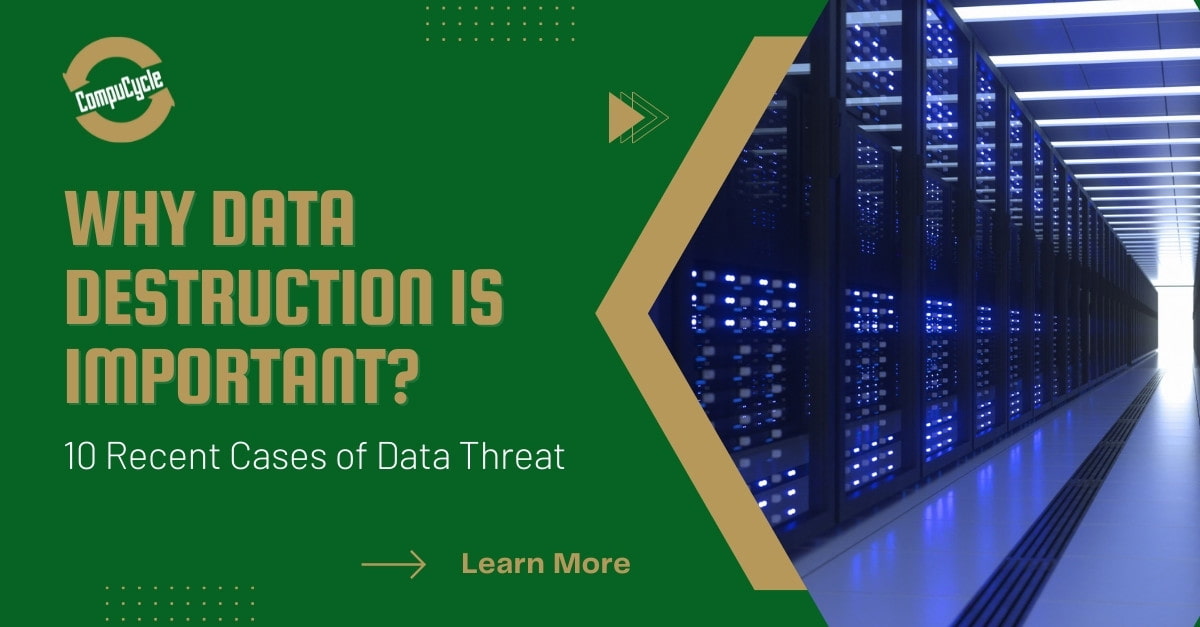The Relevance of Effective Information Destruction Practices in Shielding Sensitive Details and Ensuring Computer System Safety
In an age where data violations are progressively common, the importance of efficient data damage methods can not be overstated. Organizations face considerable dangers when sensitive info is inadequately disposed of, potentially leading to unauthorized accessibility and extreme economic consequences. Carrying out robust data destruction approaches not just minimizes these risks however likewise aligns with legal conformity demands, guaranteeing that organizations support their track record and foster client trust. The inquiry stays: what specific approaches can be used to improve these practices, and just how can organizations successfully integrate them right into their total cybersecurity framework?
Understanding Data Devastation
Comprehending information destruction is crucial in today's digital landscape, where delicate information can quickly be compromised. Reliable information destruction entails not merely erasing documents but ensuring that data is irretrievable with thorough approaches. This process is crucial for companies that take care of confidential client information, intellectual property, or internal documents, as any breach can bring about serious economic and reputational effects.
Information devastation encompasses various techniques, including shredding physical media, degaussing magnetic storage space tools, and using software-based options that overwrite data multiple times. Each method offers a particular purpose and must straighten with the level of sensitivity of the details being dealt with. As an example, physical destruction is frequently preferred for hard disk drives containing very private data, while software approaches may be enough for less sensitive details.
In addition, sticking to industry criteria and policies, such as the General Information Protection Guideline (GDPR) or the Health And Wellness Insurance Mobility and Accountability Act (HIPAA), is vital for compliance and to minimize legal dangers. Organizations has to establish a durable information damage plan, train workers on ideal practices, and on a regular basis audit their procedures to make certain that all sensitive information is disposed of safely and properly.
Risks of Inadequate Practices
Insufficient information damage techniques expose organizations to substantial threats that can have significant effects. When sensitive info is not properly disposed of, it remains prone to unapproved access, which can lead to data violations and identity theft. Such occurrences not just compromise the safety of people but also taint the company's credibility, causing a loss of consumer trust and potential financial consequences.
In addition, regulatory compliance is significantly stringent in numerous industries. Failure to comply with data destruction policies can cause substantial penalties and lawful activities against organizations. These penalties can strain economic sources and draw away interest from core service operations.
Additionally, the misuse of recurring data can lead to copyright burglary or business espionage, threatening competitive advantages (data destruction). The influence of poor data devastation prolongs beyond prompt monetary losses; it can additionally result in lasting damage to brand honesty and market setting

Organizations must identify that data security is not exclusively about stopping violations; it likewise incorporates the liable monitoring of data throughout its lifecycle. Disregarding efficient information damage protocols can have tragic implications, emphasizing the necessity for robust actions to reduce these risks.
Best Practices for Information Devastation
Implementing efficient information destruction practices is necessary for securing sensitive info and preserving conformity with regulatory standards. Organizations ought to embrace a multi-faceted approach to guarantee that data is irretrievable, therefore preventing unauthorized gain access to and prospective violations.
First, data must be classified based upon level of sensitivity, allowing organizations to apply suitable devastation methods tailored to the level of risk. For electronic data, utilizing software-based data-wiping tools that abide by market criteria can effectively overwrite existing data. Physical damage techniques, such as shredding or degaussing, are vital for tools that save delicate info, making certain full obliteration.
Developing a clear information retention plan is crucial, outlining the length of time different kinds of details need to be preserved prior to devastation. Routine audits of information storage space systems are likewise necessary to determine unnecessary or obsolete data needing removal.
In addition, training staff members on the relevance of information destruction and the details protocols to adhere to fosters a culture of safety and security within the organization. Maintaining paperwork of data damage processes provides liability and supports conformity with exterior policies and interior policies. By sticking to these ideal methods, companies can considerably alleviate the threats connected with data exposure.
Legal and Conformity Factors To Consider

Failing to follow these regulations can cause severe penalties, including substantial fines and reputational damage. Organizations should execute a robust data damage plan that straightens with these lawful structures and supplies clear standards on the appropriate techniques of data disposal, whether physical shredding or digital wiping.
In addition, maintaining documentation of information devastation tasks is crucial for showing conformity during audits or assessments. By focusing on lawful and compliance factors to consider, organizations can enhance their information protection posture and foster trust with clients and stakeholders, inevitably contributing to an extra safe and secure information management environment.
Advantages of Effective Data Devastation
Reliable data destruction techniques prolong beyond mere conformity; they provide significant advantages to companies that prioritize them. By making certain that delicate info is irretrievably destroyed, companies reduce the risk of information breaches and the potential economic consequences related to them. This aggressive method not just safeguards against unapproved gain access to but additionally improves the general trustworthiness of the company in the eyes of stakeholders and customers.
Implementing robust information destruction approaches, such as physical destruction of storage space devices or sophisticated information wiping methods, adds to the conditioning of a company's cybersecurity pose. data destruction. It decreases the likelihood of copyright burglary and protects proprietary details, thereby preserving an affordable edge in the market

Verdict
Finally, effective information destruction methods are vital for safeguarding delicate info and boosting overall computer system safety. By implementing detailed techniques such as shredding, degaussing, and software overwriting, organizations site can alleviate the threats related to unapproved gain access to and information violations. Adherence to governing standards, consisting of GDPR and HIPAA, additional enhances compliance and secures against lawful repercussions. Inevitably, a commitment to durable data devastation methods cultivates a culture of obligation, therefore strengthening a company's cybersecurity stance and maintaining client count on.
